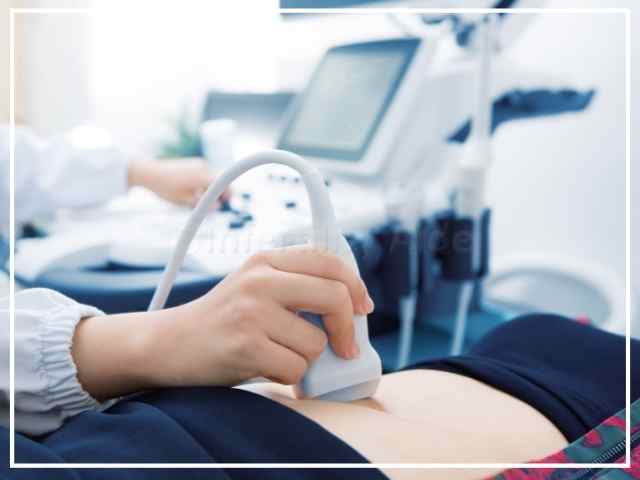What is Adenomyosis?
Adenomyosis is a medical condition of the uterine walls getting thicker resulting in the endometrium (the inner lining of the uterus), to grow into the myometrium (outer muscular wall of the uterus).
This results in prolonged periods with heavy bleeding, severe pain in the abdomen or painful intercourse. This condition is found more often in women between the ages of 32 to 50 but in some rare cases, it also affects younger women.
The main problem with adenomyosis is that it is virtually undetectable making it crucial to not neglect even the tiniest symptoms which may be an indication to a bigger problem.

What are the symptoms of Adenomyosis?
The common symptoms are:
- Painful cramps during menstruation
- Painful intercourse
- Blood clots during menstrual bleeding
- Tender abdomen
- Spotting in between periods
- Pressure on the bladder
- Constant pelvic pain
- Heavy bleeding during menstruation
- Problems with conception
What are the types of Adenomyosis?
The condition is broadly classified into two categories:
- Diffuse adenomyosis: Both the anterior and posterior walls of the uterus are diffusely involved and the uterus is enlarged symmetrically. This accounts for around 2/3rd of all cases.
- Focal adenomyosis: An asymmetric enlargement of the uterus is noted and a pseudocapsule may be found in the area of adenomyosis. This is found in around 1/3rd of patients.
What causes Adenomyosis?
The exact cause of adenomyosis is not known but it is linked to an increase in the levels of estrogen.
Among the many theories speculated over the years some of the common ones include:
- The swelling of the uterine wall due to childbirth that breaks the muscular wall around the uterus.
- Presence of stem cells in the endometrium
- Tissues present in the uterine lining before birth and growing during adulthood
- Caesarian delivery that causes the endometrial layer to thrust into the uterine muscle after the incision
How is Adenomyosis different from Endometriosis?
Since the symptoms are very similar, adenomyosis can be confused with endometriosis. In both cases, there is abnormal growth of endometrial tissue.
The difference is:
Adenomyosis: Endometrial tissue grows into the uterine walls
Endometriosis: The tissue grows outside the uterus on ovaries, fallopian tubes, or even intestines.
How is Adenomyosis diagnosed?
Many women suffer from the painful condition, where their uterus swells up to double or triple of its normal size, as Adenomyosis remains undiagnosed for a long time.
- Physical examination: will allow the doctor to find the best solution and treatment suitable in your situation.
- Ultrasound: To check for any possible tumors. Transvaginal ultrasonography, which is cheaper, safe, and efficient has a good 85% chance of detecting adenomyosis.
- MRI: If there is no clear diagnostic conclusion, your doctor may order an MRI scan to better study your uterus and pinpoint the exact location of the invasion. The MRI scan is strictly forbidden for women who are pregnant, have any kind of piercings, pacemaker, or any other form of metal in their body.
- Biopsy: To study tissue samples of your uterus (taken via biopsy) by a skilled pathologist.
What is the best treatment for Adenomyosis?
The best treatment and the only way to get complete relief from adenomyosis is to surgically remove the uterus by performing a hysterectomy.
Some women simply prefer to manage it with medications and wait till menopause for the condition to decline.

For younger women, who are trying to conceive these are some other options:
- Endometrial ablation – Destroying the endometrium (inner lining of the uterus) with the help of radio waves or microwave energy. It is a minimally invasive procedure best for women whose adenomyosis has not yet entered deeply into the uterine wall.
- Hormonal medication – If you have heavy and painful periods because of adenomyosis, you may be prescribed some GnRH injectable hormones, or a progestin hormone-releasing IUD which is inserted into your uterus. Alternatively, progesterone may be prescribed to help counter the effects of excessive estrogen. It prevents the thickness of the endometrial layer.
- Anti-inflammatory medication – Over the counter anti-inflammatory drugs like ibuprofen and naproxen are prescribed to women with mild symptoms of adenomyosis. Usually administered one or two days before your periods, it has to be continued for the first three days of menstruation.
- Uterine artery embolization – This surgery involves blocking the uterine arteries to stop the blood flow to the uterus that causes adenomyosis. Due to the insufficient blood vessels, there is no oxygen, which prevents the tissue from spreading further.
Can you get pregnant with Adenomyosis?
If you have mild adenomyosis, you may be able to conceive naturally after taking oral medications or even without any medical intervention.
However, women with adenomyosis typically have poor reproductive outcomes due to altered uterotubal transport, endometrial function and reduced receptivity.
Also, many women who bleed excessively due to adenomyosis may have anemia, which makes their bodies unfit to conceive.
How do you treat adenomyosis infertility?
Various studies have demonstrated how IVF outcomes or even natural conception improves in women after undergoing treatment for adenomyosis.
Women with repeated IVF failures were also able to conceive after surgery for adenomyosis (1).
With doctors often disregarding the problems, most women are unaware of this situation. American actor Gabriella Union’s adenomyosis, which caused infertility, was undiagnosed for twenty years.
Bearing in mind that this condition is caused due to abnormalities in the estrogen levels, hormonal therapies and injectables in assisted reproduction procedures (ART) like IVF can help you conceive.
To plan your treatment of adenomyosis infertility with one of our fertility experts, get in touch using the red contact button on this page.
References
- Harada, T., Khine, Y. M., Kaponis, A., Nikellis, T., Decavalas, G., & Taniguchi, F. (2016). The Impact of Adenomyosis on Women’s Fertility. Obstetrical & gynecological survey, 71(9), 557–568. https://doi.org/10.1097/OGX.0000000000000346
Medically Reviewd by: Dr. Meenakshi, PhD